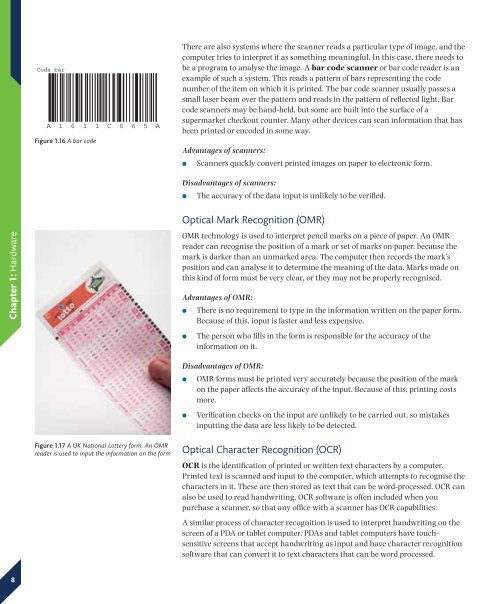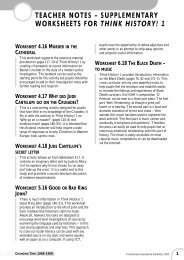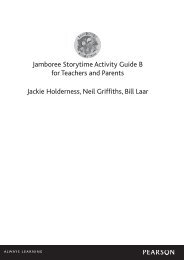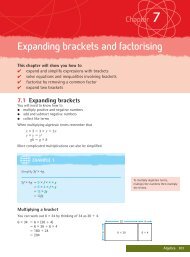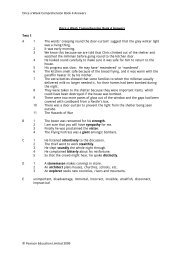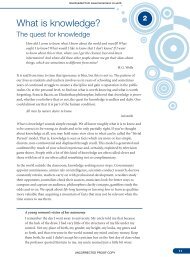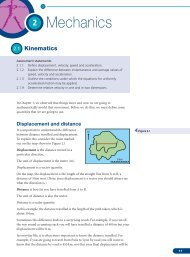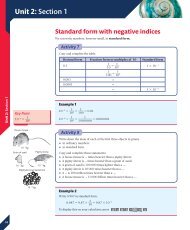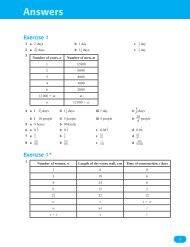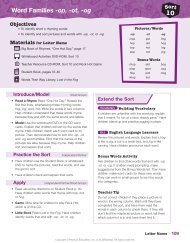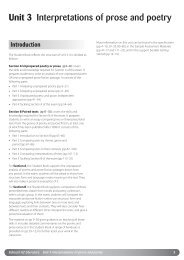Chapter 1: Hardware - Pearson Schools
Chapter 1: Hardware - Pearson Schools
Chapter 1: Hardware - Pearson Schools
Create successful ePaper yourself
Turn your PDF publications into a flip-book with our unique Google optimized e-Paper software.
Coda bar<br />
A 1 6 1 1 C 0 6 5 A<br />
Figure 1.16 A bar code<br />
There are also systems where the scanner reads a particular type of image, and the<br />
computer tries to interpret it as something meaningful. In this case, there needs to<br />
be a program to analyse the image. A bar code scanner or bar code reader is an<br />
example of such a system. This reads a pattern of bars representing the code<br />
number of the item on which it is printed. The bar code scanner usually passes a<br />
small laser beam over the pattern and reads in the pattern of reflected light. Bar<br />
code scanners may be hand-held, but some are built into the surface of a<br />
supermarket checkout counter. Many other devices can scan information that has<br />
been printed or encoded in some way.<br />
Advantages of scanners:<br />
<br />
Scanners quickly convert printed images on paper to electronic form.<br />
Disadvantages of scanners:<br />
<br />
The accuracy of the data input is unlikely to be verified.<br />
<strong>Chapter</strong> 1: <strong>Hardware</strong><br />
Optical Mark Recognition (OMR)<br />
OMR technology is used to interpret pencil marks on a piece of paper. An OMR<br />
reader can recognise the position of a mark or set of marks on paper, because the<br />
mark is darker than an unmarked area. The computer then records the mark’s<br />
position and can analyse it to determine the meaning of the data. Marks made on<br />
this kind of form must be very clear, or they may not be properly recognised.<br />
Advantages of OMR:<br />
<br />
<br />
There is no requirement to type in the information written on the paper form.<br />
Because of this, input is faster and less expensive.<br />
The person who fills in the form is responsible for the accuracy of the<br />
information on it.<br />
Disadvantages of OMR:<br />
<br />
<br />
OMR forms must be printed very accurately because the position of the mark<br />
on the paper affects the accuracy of the input. Because of this, printing costs<br />
more.<br />
Verification checks on the input are unlikely to be carried out, so mistakes<br />
inputting the data are less likely to be detected.<br />
Figure 1.17 A UK National Lottery form. An OMR<br />
reader is used to input the information on the form<br />
Optical Character Recognition (OCR)<br />
OCR is the identification of printed or written text characters by a computer.<br />
Printed text is scanned and input to the computer, which attempts to recognise the<br />
characters in it. These are then stored as text that can be word-processed. OCR can<br />
also be used to read handwriting. OCR software is often included when you<br />
purchase a scanner, so that any office with a scanner has OCR capabilities.<br />
A similar process of character recognition is used to interpret handwriting on the<br />
screen of a PDA or tablet computer. PDAs and tablet computers have touchsensitive<br />
screens that accept handwriting as input and have character recognition<br />
software that can convert it to text characters that can be word processed.<br />
8


